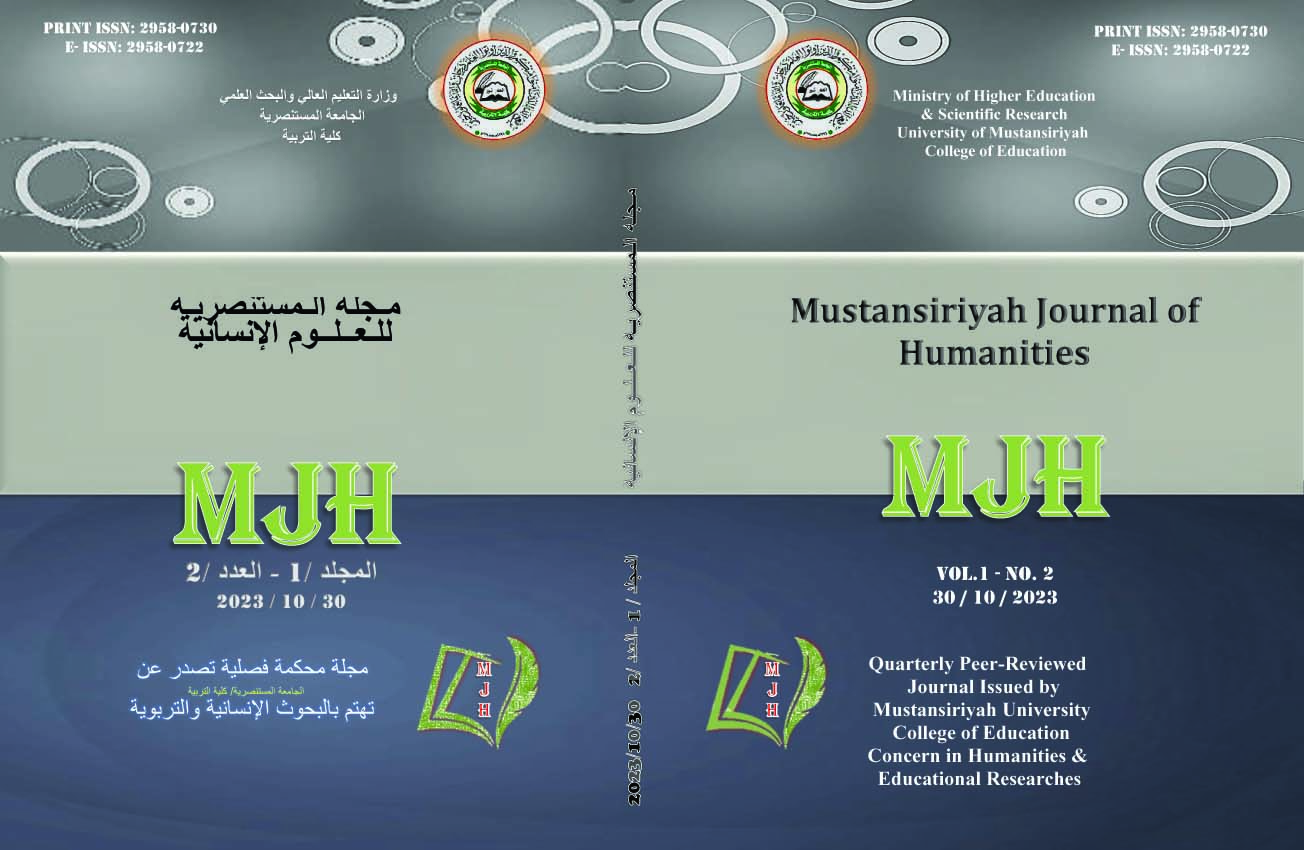Elements of Reference In M Rhymed Verses of Alfarasdaq Poet As A Rhetorical Similarity
DOI:
https://doi.org/10.47831/mjh.v1i2.252Keywords:
referrals, demonstrative nouns and pronounsAbstract
This study was based on revealing the role played by the elements of reference, especially the demonstrative noun and the pronoun, in achieving the speaker's intention by conveying great meanings befitting the position of the Praiseworthy Imam Ali bin Al-Hussein. Al-Farazdaq mentioned them along with a network of relationships that tightly connect the parts of the text, which increases the interaction of the recipient to fall upon him. What the speaker means. The reference came as a reference to the near masculine singular in the first stanzas of Al-Farazdaq's poem in nine places to draw the recipient's attention to the status of the given, and one place as a reference to the distant masculine singular at the end of his poem. The reference was made with the third person singular pronoun, connected ((), and separately (he) and concealed in two-thirds of the poem to show the religious and social status of the praised person and his piety, tolerance, generosity, good manners, and great status. Then the reference came with the third person collective pronoun (they) in the last third of it, to include those meanings. Noble religion, and the noble morals of the People of the House, peace be upon them in general.
Downloads
Published
Versions
- 2023-12-03 (3)
- 2023-11-15 (2)
- 2023-11-08 (1)





